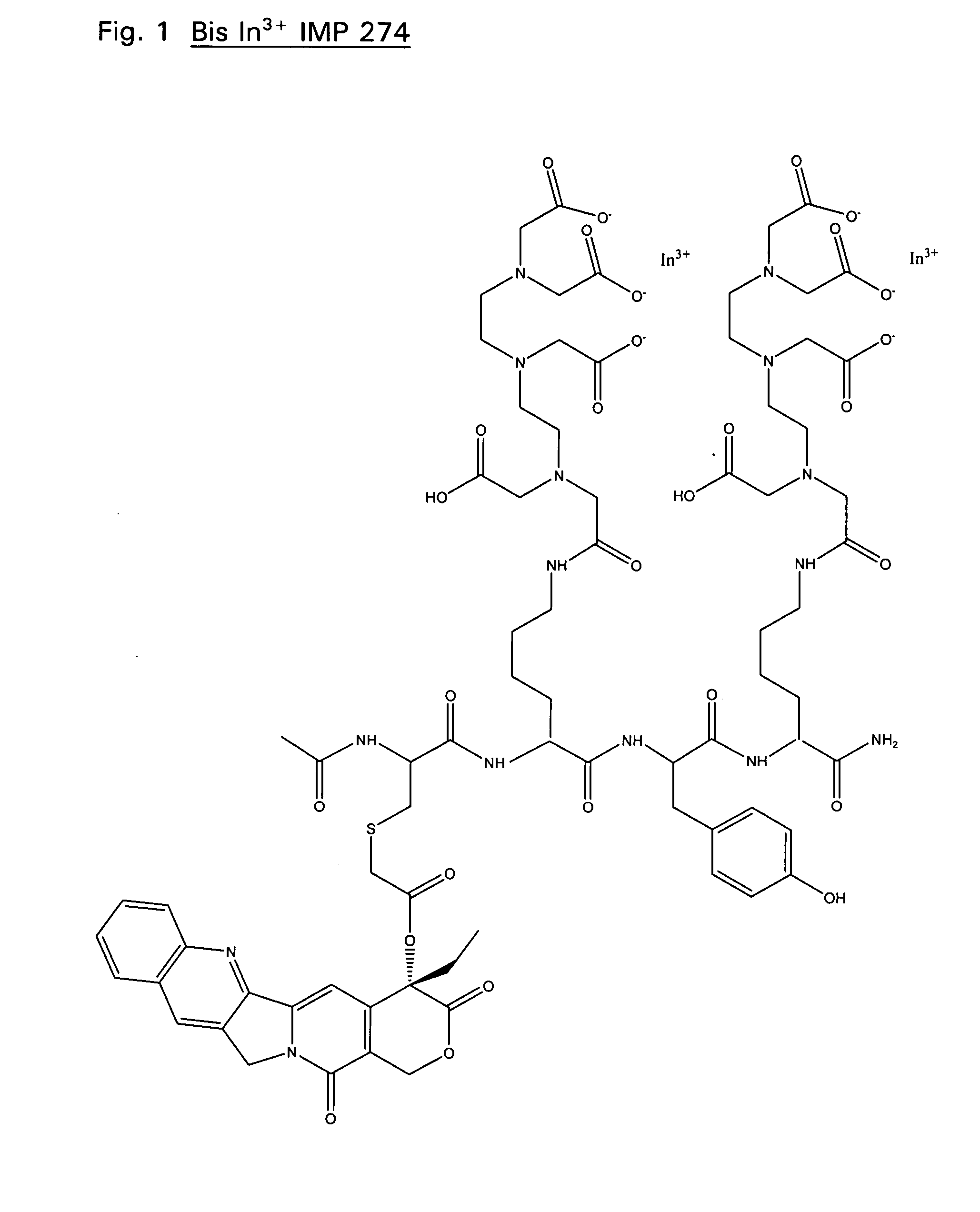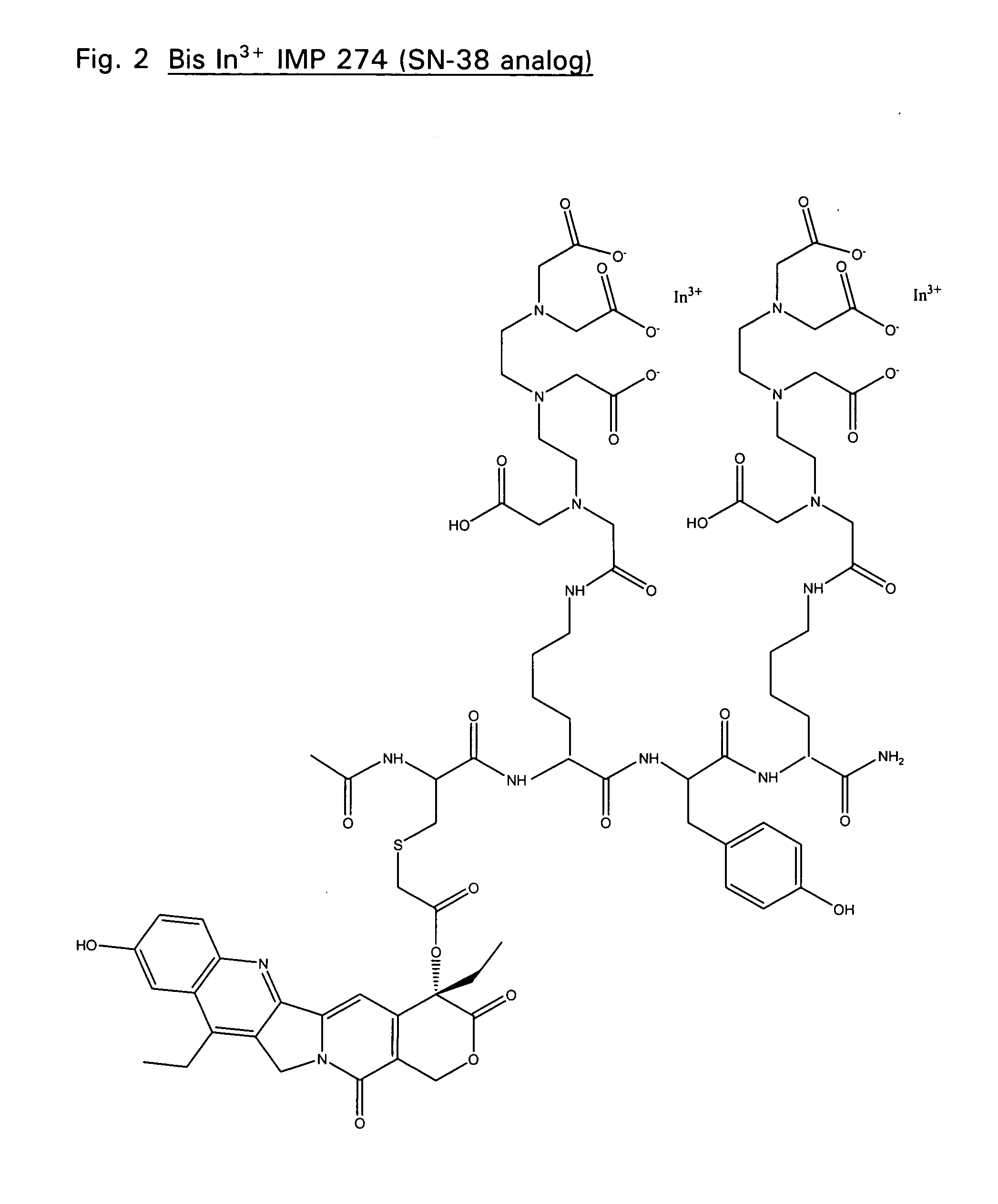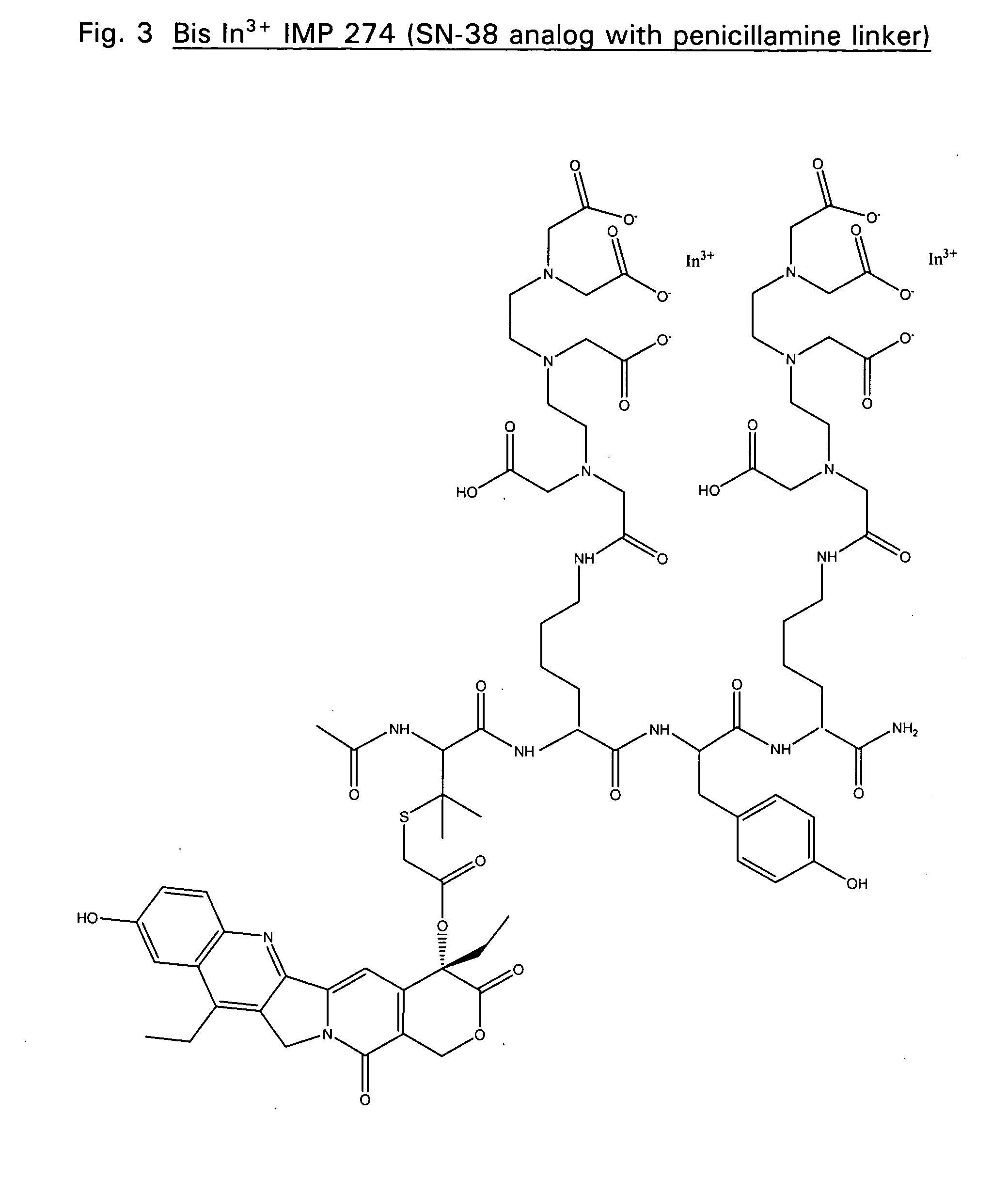Therapeutic and diagnostic conjugates for use with multispecific antibodies
a conjugate and antibody technology, applied in the field of therapeutic and diagnostic conjugates for use with multispecific antibodies, can solve the problems of inability to readily substitute other nuclides into available reagents for alternative uses, inability to prepare individual bsabs for each possible application, and inability to rapidly excret other nuclides, etc., to achieve rapid excretion, facilitate localization of the compound, and reduce the toxicity of the effector molecul
- Summary
- Abstract
- Description
- Claims
- Application Information
AI Technical Summary
Benefits of technology
Problems solved by technology
Method used
Image
Examples
example 1
Synthesis of 20-O-chloroacetyl Camptothecin
20-O-chloroacetyl camptothecin has been described. See U.S. Pat. No. 4,943,579. Camptothecin (1.0 gm) was dissolved in 40 mL of CHCl3. Chloroacetic anhydride (1.2 eq), pyridine (1.0 eq) and DMAP (0.1 eq) was added to this mixture which was then refluxed for two hours. After no observable change in the reaction mixture, additional chloroacetic anhydride (1.2 eq) and pyridine (1.0 eq) was subsequently added and the mixture was refluxed for an additional 2 hrs. HPLC showed the reaction taking place. An additional amount of chloroacetic anhydride (2.1 eq) and pyridine (4.3 eq) was added and the reaction mixture was refluxed for another 2 hrs. HPLC showed the reaction to be complete. Mixture was worked up by washing with 65 mL of H2O, then 0.1 N NaOH solution, then another 65 mL of H2O. Organic layer was dried with Na2SO4 then filtered and finally removed under reduced pressure. Yellow precipitate formed. HPLC showed one product. ESMS results ...
example 2
Synthesis of IMP 274, Ac-Cys(Campto-COCH2)-Lys(DTPA)-Tyr-Lys(DTPA)-NH2
The IMP 274 peptide (see FIG. 1) was synthesized using a protocol similar to that described by Karacay et. al. Bioconjugate Chem. 11:842-854 (2000). IMP 222, (Ac-Cys-Lys(DTPA)-Tyr-Lys(DTPA)-NH2) (38.1 mg) and 11.7 mg (1.0 eq) of 20-O-chloroacetyl camptothecin were each dissolved separately in 150 μL DMF. The two quantities were combined and stirred. Pyridine (100 μL) was added and the reaction vessel was purged with Argon and sealed with parafilm. Little change was noted by HPLC after 1.5 hrs. DIEA (50 mL) was then added to the reaction mixture. HPLC shows the reaction to have gone to completion after 2 hrs. The reaction mixture was purified using a prep column and fractions were sent for analysis by ESMS (MH+: 1721). Four fractions show pure product with RT of ˜7.1 minutes. Final yield: 22.2 mg (1.290×10−5 mol, 46.9%). Similarly, chemistry well known in the art can be used to synthesis derivatives of IMP 274 as...
example 3
IMP 274 Labeling Kit
Labeling kits were made by dissolving citric acid (0.414 gm), HPCD (5.0074 gm), in 80 mL of Di H2O. This mixture was then adjusted to pH 4.25 after which IMP 274 (0.0021 gm) was added. The volume was QS to 100 mL with Dl H2O and 1 mL aliquots of this solution, filtered through a 0.22 μm filter, were added to lyophilization vials which were then frozen, lyophilized, and stoppered under vacuum.
PUM
| Property | Measurement | Unit |
|---|---|---|
| energy | aaaaa | aaaaa |
| energy | aaaaa | aaaaa |
| molecular weight | aaaaa | aaaaa |
Abstract
Description
Claims
Application Information
 Login to View More
Login to View More - R&D
- Intellectual Property
- Life Sciences
- Materials
- Tech Scout
- Unparalleled Data Quality
- Higher Quality Content
- 60% Fewer Hallucinations
Browse by: Latest US Patents, China's latest patents, Technical Efficacy Thesaurus, Application Domain, Technology Topic, Popular Technical Reports.
© 2025 PatSnap. All rights reserved.Legal|Privacy policy|Modern Slavery Act Transparency Statement|Sitemap|About US| Contact US: help@patsnap.com



